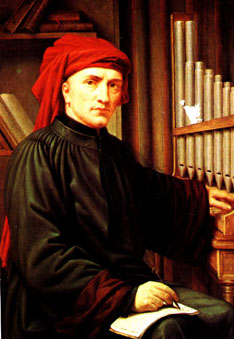Years ago, I lamented that the end of the age of Catholic musical creativity had seemed to be upon us. In the 1980s, we became aware of these vast treasures of polyphony thanks to the secular popularity of great music of the Renaissance. On CDs, we listened to the amazing work of a thousand years and we wondered: what happened? Where are Josquin, Palestrina, Victoria, Mozart, Bruckner? What happened to smash this tradition? The documents of the Second Vatican Council talk about beauty, chant, and polyphony but all we hear in our parishes is something else entirely.
Then chant became popular the same way. We listened in our cars, in our living rooms, on our iPods. Chant was everywhere but in our parishes. Why did all musical greatest seem to be in our past but nowhere in the present and highly unlikely in the future?
Thinking about this more I began to understand. The liturgy was unstable, and composers aren’t drawn to that. Choirs were being disparaged and put down. Excellence in music was under attack in favor of an amateurism chic. The beautiful was unfashionable because it supposedly contradicted the real world in which we live our lives. Liturgy was supposed to be more like reality television than prayerful theater. No wonder the composers had lost interest. The musicians had all been chased away.
Well, that was all before this year. In 2011, we’ve seen an incredible outpouring of fantastic composition by excellent musicians, all of it structured for liturgical use using the musical and textual language of the liturgy itself. The books and collections are pouring out faster than even close observers can follow, and this new material is completely unlike the usual fare we’ve been treated to over the last decades, which has been essential pop music with made-up, feel-good lyrics. The new approach to composition takes the liturgy and its tradition seriously.
It is an astonishing turnaround, something that could only be expected by a person of a mighty faith and optimism.
What has inspired all of this? There are many factors. The propers of the Mass have been rediscovered as source texts after decades of neglect. The proliferation of the extraordinary form of Mass has given hope that order can prevail over chaos. Papal liturgy has been seriously upgraded. Gregorian chant is back has a living form of music.
More than anything else, the appearance of the Third Edition of the Roman Missal has provided incredible encouragement that the Church has once again begun to take its liturgy task seriously. The language is solemn, rhetorically high, and dignified. It is not pop language, so it strongly suggests in its own linguistic structure that draws from something. Pop music is not the appropriate approach. It calls for chanted music that comes from the liturgy itself. This is the thing that has inspired so much creative energy.
Most serious musicians I know are very excited about the opportunity. They sometimes wake in the morning with a melody in their heads and quickly write it out, just like in the movies. They fill in the other parts and, next thing you know, they have a Mass setting ready to go. There are many sites that are now posting these for free. Other composers have established their own commercial sites where you can buy the Mass for $75 and make as many copies as you want. Then of course there are the conventional sources for music.
Catholic musicians are increasingly taking these resources for granted so it can be hard to fully appreciate the difference between now and, say, five years ago. There was hardly any Catholic music online. Composers were not really doing the Catholic thing. There was little inspiration and plenty to inspire depression. The chant movement was in its infancy. The idea of the new Missal had long been rumored but most people figured it was eons away and there was not much hope for it at any point in the future.
And now suddenly, it is upon us. We are amazed to see a flurry of new names who are leading the way in new composition: Kevin Allen, Jeffrey Ostrowski, Adam Bartlett, Richard Rice, Arlene Oost-Zinner, Aristotle Esguerra, David Hughes, Fr. Samuel Weber, Brian Michael Page, Bruce Ford, Ian Williams, Kathy Pluth, David Friel, Chris Mueller, Richard Clark, Noel Jones, Charles Culbreth, Jacob Bancks, and so many others. Many of these people never imagine that they would find themselves in the ranks of Catholic composers. They were reluctant to accept the role, but they still answered the call.
We are all privileged to be alive in these times of the revival of the highest of the sacred arts. This is the dream of so many people for so long. Back in the sixties, a generation of musicians saw an astonishing collapse take place before their very eyes. No matter what they did, they could not stem the tide. Not only did their worst predictions come true, they were surpassed and then some. even more shocking was the the collapsed lasted much longer than anyone could have expected. Forty-five years is a long time to wait. And forty years is a long time to live with a Missal text that was nowhere near being what it should be.
The sufferings of those generations should be kept in mind as we go forward. They worked, prayed, wrote, and did their best to keep beauty alive in times when it was not appreciated or encouraged. They knew that it would return someday, but most did not live to see this day. They are our benefactors and we should be grateful and pray for them. They kept the tradition alive, and now it is thriving again, being refurbished so that it can be handed on to the next generation.

